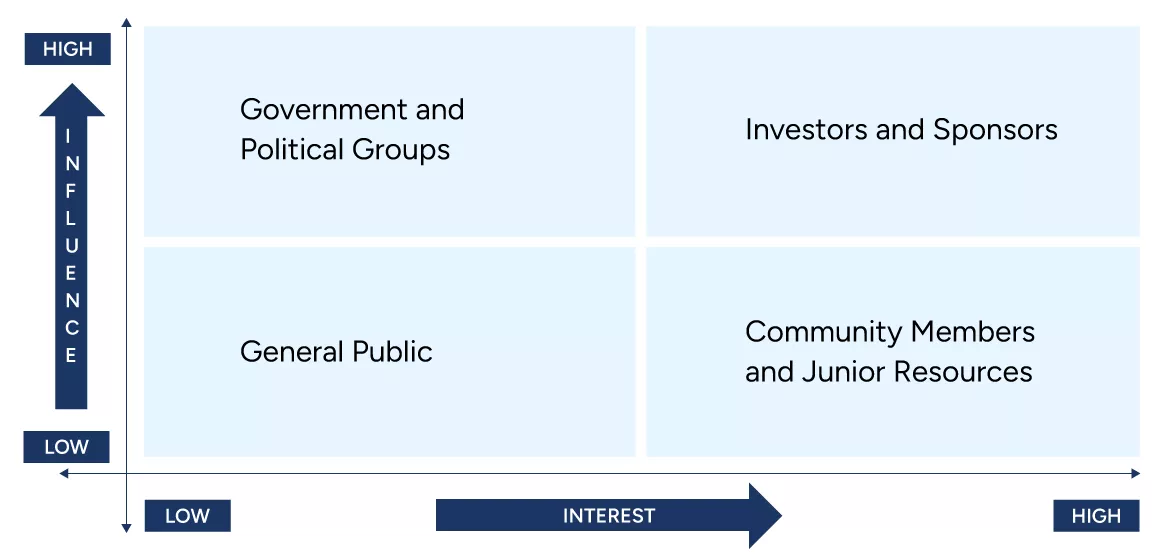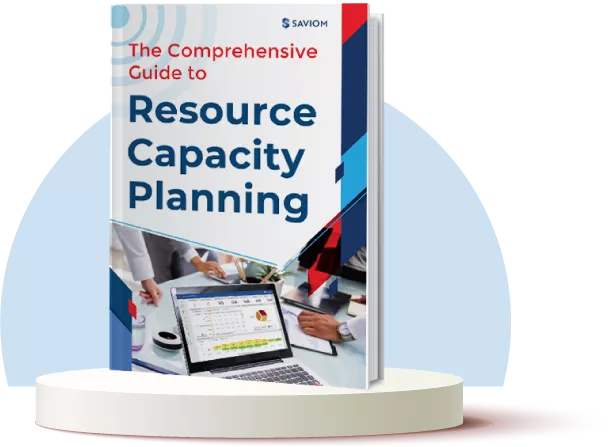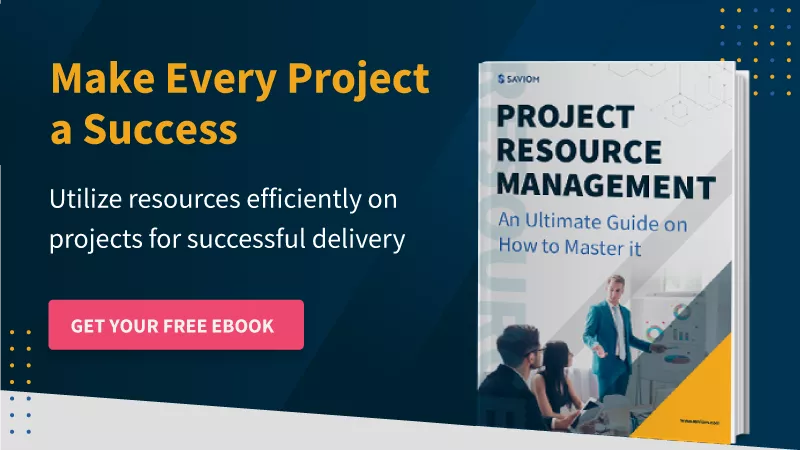Projects are a collaborative effort of diverse individuals and groups, each contributing to it in different ways. Out of these, the key personnel who have the authority to determine the success or failure of the initiative are referred to as project stakeholders. They can range from clients and investors who fund the project to team members and managers who are responsible for its delivery.
Since project stakeholders’ participation or input directly affects the end outcome, it’s important to understand their needs and manage their expectations effectively. For this, project managers must diligently communicate and engage with them, gather their feedback, and cater to their expectations throughout the lifecycle.
This blog explains who project stakeholders are, their types, and effective ways to manage them.
But first, let’s start by understanding:
Who are Project Stakeholders?
“PMI defines stakeholders as individuals and organizations who are actively involved in the project or whose interests may be positively or negatively affected as a result of project execution or completion.”
In other words, project stakeholders can be individuals or groups with a “stake” in a project and can either influence it or be influenced by its outcome. Among these, key stakeholders have major control over the project scope. They can even disrupt or bring the project to an abrupt halt if they withdraw their support. Therefore, the failure or success of the project is highly dependent on the satisfaction of its stakeholders.
For example, if you create a website for a client, the business owner (your client) is a key stakeholder. You must understand their requirements, develop the website accordingly, make any feasible changes requested, and convey the progress regularly. Doing so is critical because if they disapprove of certain features/elements or reject the UI design if it doesn’t meet their expectations, it can halt progress and even lead to a project failure.
Given the basic definition of project stakeholders, let’s understand the types.
Types of Project Stakeholders
There are two main categories of project stakeholders: internal and external. Both groups play unique roles in the project’s success.
Internal Stakeholders
Individuals or parties within an organization who are directly involved in a project are called internal stakeholders. They actively participate in its planning, execution, and delivery. Moreover, internal stakeholders can influence a project’s progress and decision-making. Examples are the project team, project manager, sponsors, and other internal teams, such as sales or marketing.
External Stakeholders
Individuals or parties outside the organization who may not be directly involved in a project are called external stakeholders. However, the project’s outcome can affect them, or they can indirectly influence it. Examples are clients, investors and sponsors, communities, shareholders, end-users, government, and regulatory authorities.
Now that we know the primary types of stakeholders, let’s learn how to differentiate between project stakeholders and shareholders.
Stakeholder vs. Shareholder: How Are They Different?
A shareholder is an individual or entity that owns equity stock in a company, giving them partial ownership. In contrast, a stakeholder is anyone with an interest in the company’s success, beyond just financial gains from stock appreciation. Typically, all shareholders are considered stakeholders in a company, but not all stakeholders are shareholders.
| Comparison Criteria | Stakeholders | Shareholders |
|---|---|---|
| Definition | Individuals or groups interested in the company’s activities and performance | Individuals or organizations that own shares in a company |
| Ownership | May or may not have ownership in the company | Own part of the company through shares |
| Impact of Business Decisions | Affected by factors like company policies, sustainability, and ethical practices. | Affected by the financial performance of the company |
| Focus & Priorities | Business operations, ethical impact, long-term success, and stability | Maximizing profits and increasing stock value |
| Monetary Benefit | Not all stakeholders receive direct monetary benefits | Always receive monetary benefits through dividends and stock appreciation |
| Types | Internal stakeholders & external stakeholders | Common shareholders & preferred shareholders |
| Long-Term Interest | Often have a long-term stake in the company’s success and sustainability | Can sell their shares and exit the company at any time |
| Role in the Company | Shape the company’s reputation, operations, and long-term growth through various means | Influence decisions through voting rights and financial investments |
Now that we know how stakeholders and shareholders differ, let’s look at some examples of project stakeholders.
Examples of Project Stakeholders
The stakeholders can vary depending on the type of project and the industry. Some common examples of project stakeholders are:
- Project Manager: Responsible for planning and overseeing the project from start to finish.
- Team Members: Individuals directly working on the project tasks.
- Resource Managers: Responsible for securing resources necessary for project execution.
- Executives & Senior Management: Provide strategic direction and make high-level decisions.
- Company Owners: Have a direct interest in the success of the project.
- Investors & Financiers: Provide financial backing and expect a return on their investment.
- Sponsors: Support and fund the project and the team working on it.
- Vendors: Provide goods or services needed for the project.
- Consultants: Offer expert advice or specialized knowledge to help with the project.
- End Users: The individuals who will use the product or service once the project is complete.
- Communities: Local communities that may be affected by the project and care about its impact on health, safety, and economic development.
- Government: Government agencies that collect taxes and are concerned with the project’s broader social and economic impact.
As we have gone through the examples of stakeholders, we must know why stakeholder management is important.
Read More: What is Resource Availability in Project Management, and Why Does It Matter?
Why is Project Stakeholder Management Important?
Stakeholders hold control over various aspects of a project, including funding, resource allocations, and approvals. If one fails to engage these key stakeholders and fulfill their expectations, they may withdraw their consent, leading to the project’s failure. The best example is the client, who may disapprove or cancel the project if it fails to meet their requirements in any aspect. This may not only cause revenue loss but also hamper the company’s reputation.
That is why managing stakeholder expectations and demands is critical. Besides, they have experience in the given industry, and some are subject matter experts. Hence, they can guide project managers and help them determine budgets, milestones, deliverables, resource requirements, and project constraints. Their valuable insights and support increase the probability of a project’s success exponentially.
Furthermore, engaging stakeholders helps in the early identification of potential risks and challenges that can hamper project progress. As a result, project managers can proactively develop risk management strategies and contingency plans to minimize the impact. Besides, effective stakeholder management facilitates open communication and fosters trust among involved parties, which leads to better project performance.
Therefore, by actively keeping stakeholders involved, updated, and engaged, project managers can meet their expectations, minimize conflicts, and ensure successful project delivery.
Read More: Enterprise Risk Management Framework: 8 Core Components
As we now know how vital project stakeholder management is, let’s learn how to do a project stakeholder analysis.
How to Perform Stakeholder Analysis?
Stakeholder analysis helps you identify and understand the people or groups who can impact or be impacted by the project. The process to do that is as follows:
Identify Key Project Stakeholders
The first step is to identify internal and external stakeholders. For this, you can review the project documentation and gather insights from team members on who should be considered. You can also consult other departments, such as finance and operations, to ensure no key stakeholder is overlooked. For a comprehensive assessment, you must consider those who influence the project, benefit from it, or might face negative impacts from its failure.
Prioritize Project Stakeholders by Influence and Interest
Not all stakeholders hold the same level of interest or power in a project. Some may be involved in decision-making, while others simply focus on the end result. Thus, it is crucial to categorize and prioritize stakeholders based on their level of influence and interest in the project. An influence/interest chart is one of the best ways to identify, visualize, and prioritize the project stakeholders.
The influence/interest matrix categorizes stakeholders as follows:
High influence, high interest – These are the key decision-makers in a project. Managing their concerns, expectations, and requirements closely and diligently is crucial. For example, investors and sponsors.
High influence, low interest – They are not directly involved in a project but can significantly influence and even disrupt it. Thus, it is necessary to keep them satisfied. For example, the Government and political groups.
Low influence, high interest – They have a strong interest in the project’s outcome but lack the power or authority to significantly impact its direction, decisions, or end result. For example, community members or junior resources.
Low influence, low interest – These are the least significant project stakeholders. Still, it is imperative to monitor them on a timely basis and keep them in the loop to check if their interest or influence have changed over time. For example, the general public.

An Influence/Interest grid helps categorize project stakeholders based on their level of influence and interest.
Develop Stakeholder Engagement Plans
To ensure consistent project stakeholder support, you can create a formal engagement plan that clearly outlines communication protocols. This includes determining frequency and modes of communication (synchronous or asynchronous). You can also customize the information or updates to each stakeholder’s needs. These measures help ensure that key stakeholders are highly attuned to the project’s progress.
In the following section, we will learn about the strategies you can employ to manage project stakeholders efficiently.
7 Effective Ways to Manage Project Stakeholders
If you fail to deal with project stakeholders properly, it may pose challenges like disagreement, withdrawal of consent, and differences in perspectives. However, with the strategies mentioned below, you can avoid these risks and ensure successful outcomes.
Clearly Outline Project Stakeholder’s Roles & Expectations
It is crucial to define each stakeholder’s role, needs, and expectations to ensure the project meets its intended outcomes. These attributes should be documented in a shared register accessible to all, providing clarity for everyone involved in the project. This register allows you to track everyone’s roles and responsibilities as well as establish project priorities.
Moreover, the shared register helps the project team understand the involvement, influence, and interest of every stakeholder. It clarifies the chain of command and reporting structure, which helps avoid ambiguity and miscommunication. Thus, it facilitates better decision-making and ensures alignment with project stakeholders’ expectations.
Involve Stakeholders Throughout the Project Lifecycle
From project initiation to execution and closure, stakeholders play a vital role at every stage. For instance, a project plan will be inconducive without understanding their expectation before the outset. Thus, conducting meetings with stakeholders is imperative for managers to ensure that the project plan aligns with the final deliverables.
After the project’s approval and initiation, managers must regularly engage with them and share updates about the progress. It helps determine if anything has changed regarding priorities, scope, requirements, etc., and allows managers time to realign efforts. Additionally, conveying bottlenecks proactively fosters trust and transparency and prevents issues. Finally, getting project closure documents signed avoids last-minute disagreements and conflicts over final deliverables.
Read More: What is Project Lifecycle and How to Get it Right?
Seek Their Buy-in for Project Milestones and Deliverables
Once you create a work breakdown structure and define project milestones, seeking stakeholders’ concurrence is critical to ensure they are on the same page. It’s all the more essential when you are working on a long and complex project involving multiple phases where deliverables are defined stage-wise. For instance, software development may consist of multiple iterations with different features in each release.
Thus, creating milestones and seeking approvals for these features before every release keeps the design in line with the expectations. Otherwise, there will be mismatched deliverables, leading to rework and schedule overruns. Contrarily, stakeholder buy-in will keep their trust intact and help you build rapport with them.
Maintain Transparency on Risks and Challenges
Risks are inherent to every project. Thus, giving a false scenario to the stakeholders will lead to unrealistic expectations. Therefore, a project manager should convey the risks transparently at the approval stage. You can use systematic methods like assumption analysis, risk matrix, and cause & effect diagrams to build a comprehensive risk chart.
Based on that, you should focus first on the high-priority and critical risks and inform the stakeholders about them. It will also help you build a solid risk mitigation or contingency plan beforehand. Moreover, after the project starts, managers should proactively track these risks to prevent them from further turning into issues.
Read More: Risk Matrix in Project Management: An Ultimate Guide
Get Their Agreement on Change Management Framework
Anything that influences a project, tasks involved, processes, structures, or final deliverables at any stage is a change. Suppose your team is building a business app, and the client requests adding two functionalities that were not initially agreed upon. Failing to accommodate this request adequately may lead to disagreements and disappointment.
To avoid this, the project manager should follow the change management framework that outlines how to handle such requests. They should approach the Change Control Board, a body of senior internal stakeholders that reviews suggestions by clients. Discussing these change requests with the CCB helps assess the feasibility of the ad-hoc requests. This disciplined approach to incorporating changes helps minimize room for any unfeasible requests or conflicts.
Regularly Communicate Progress Updates with the Project Stakeholders
As discussed earlier, regularizing project communication about progress helps strengthen trust and faith. Hence, a project manager should convey regular updates about the accomplishment of milestones at every stage. It will help reduce discrepancies and ensure that the project’s course aligns with stakeholders’ expectations.
Furthermore, reporting challenges and issues faced during the course of the project is necessary. It helps brainstorm and work out ways to eliminate the hindrances with valuable input and support from project stakeholders. Moreover, transparency about issues negates any room for impractical expectations and builds your credibility.
Read More: Why Project Communication Skills are Important and How to Master Them?
Manage and Resolve Stakeholders’ Skepticism Effectively
Not every stakeholder is easy to convince. Some stakeholders can be skeptical of the projects and may require extra effort and patience. Therefore, a project manager should take appropriate initiatives based on the type of “difficult” stakeholder. For instance, micromanagers may try to control details, so assigning senior team members to address their queries helps.
On the other hand, pushy stakeholders may demand unrealistic changes and make it important to set firm boundaries. Moreover, skeptics can be reassured through consistent delivery and regular updates as they question progress. Idlers care about the project but fail to provide timely input, requiring regular follow-ups. The most challenging are saboteurs, who resist due to personal or political motives. An effective way to win back their consent is by effectively demonstrating the project’s benefits.
The practices mentioned above come in handy when dealing with stakeholders and help you win more projects.
Conclusion
Project stakeholders hold a key position in defining and shaping the success of a project. Hence, it is highly important to identify them, understand their expectations, and cater to them. As discussed above, combining a positive attitude and some good practices can help make project stakeholder management efficient and effortless.
So, how do you implement a stakeholder management plan in your organization?
The Glossary
Read More: Glossary of Resource Workforce Planning, Scheduling and Management











